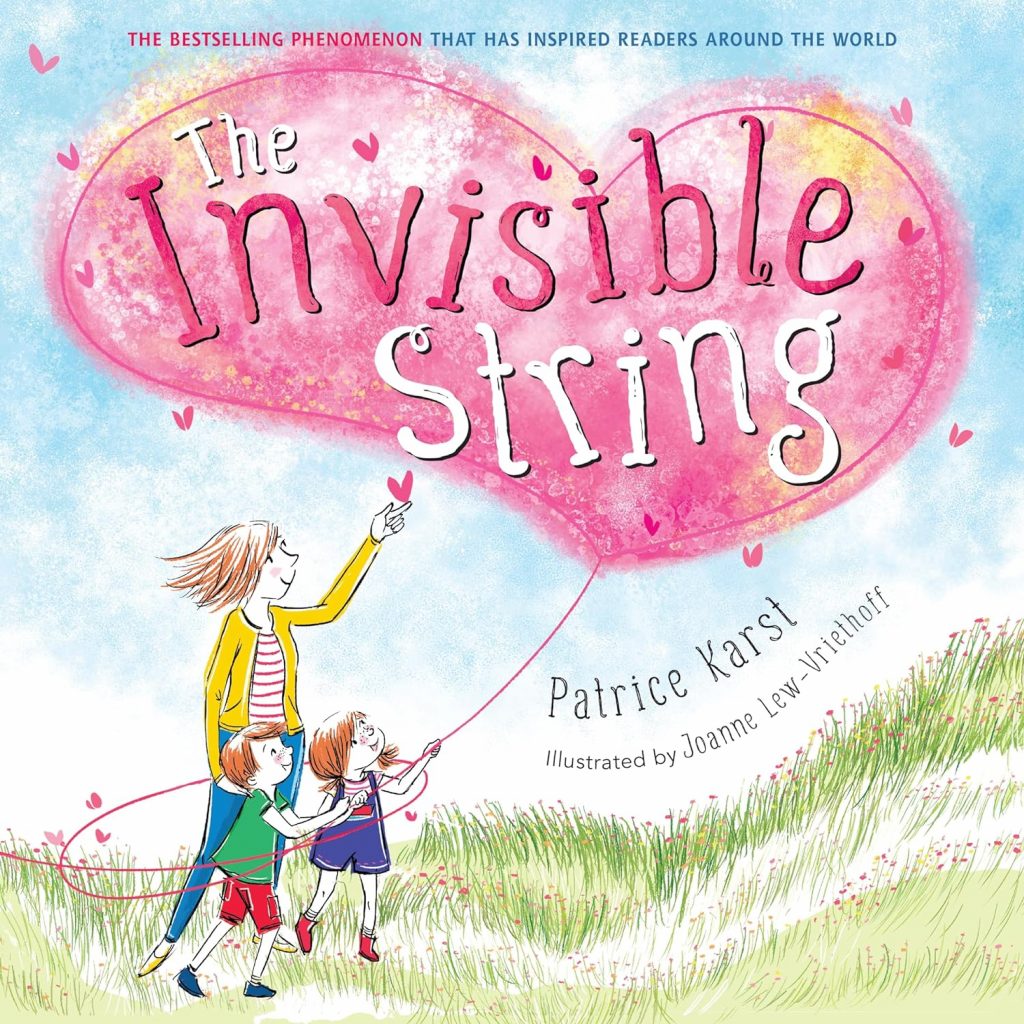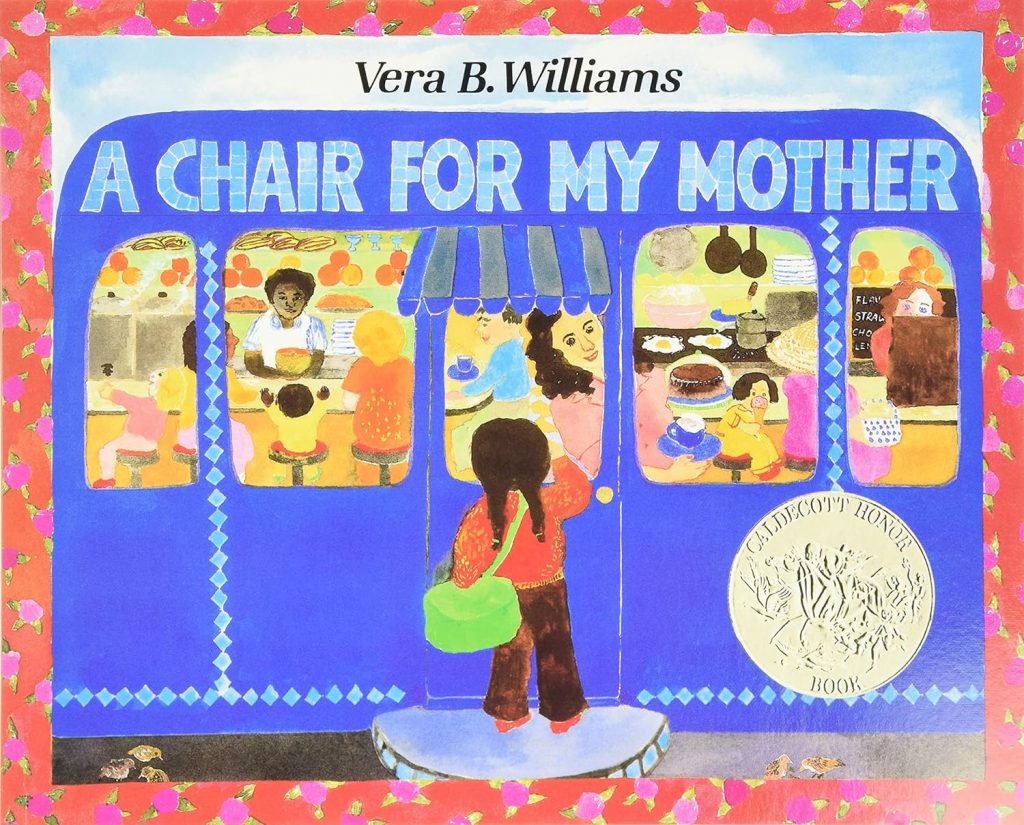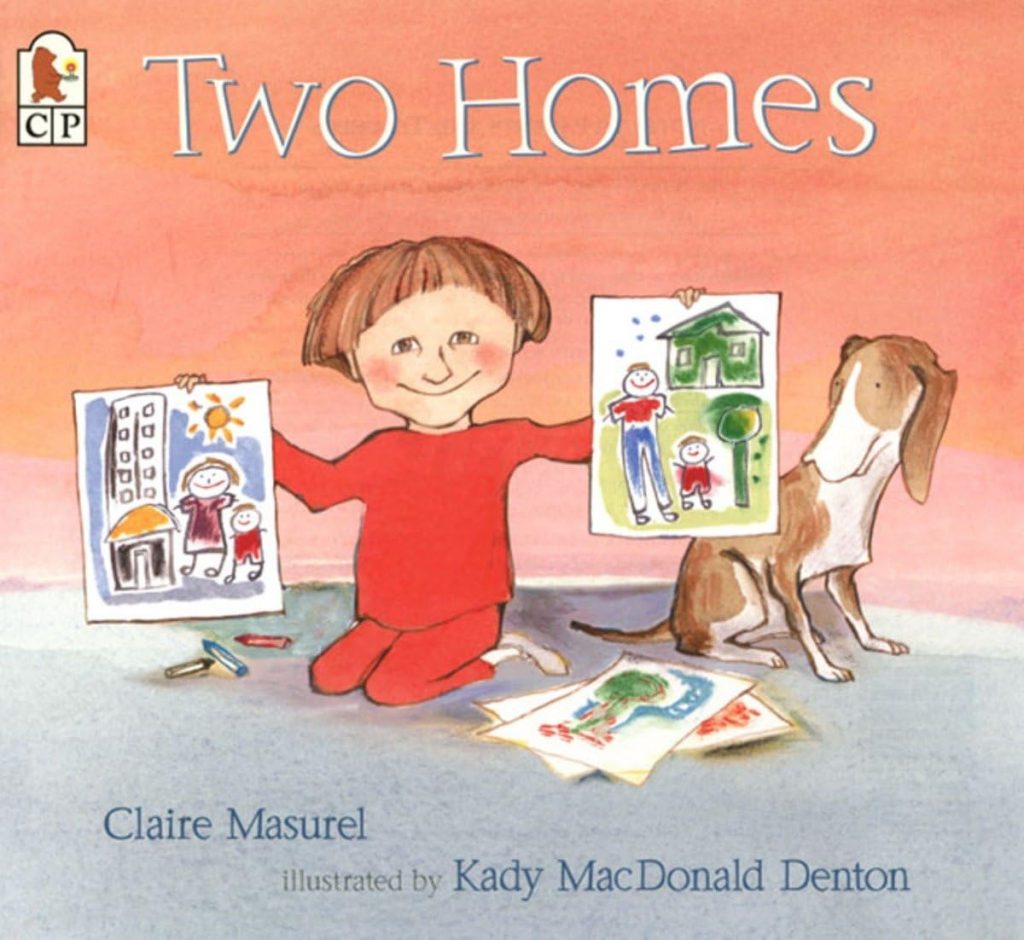Family plays a crucial role in shaping individuals, influencing their values, beliefs, and behaviors. From early childhood, family provides a sense of identity, belonging, and emotional support, laying the foundation for social and emotional development. Family dynamics and interactions teach important life skills such as communication, empathy, and problem-solving. As individuals grow, family continues to serve as a source of guidance and stability, offering a safe space for self-expression and personal growth. Through both positive and challenging experiences, family helps shape individuals’ understanding of relationships, resilience, and the importance of community, influencing their choices and shaping their character throughout their lives.
The Invisible String by Patrice Karst (Published 2000)

“The Invisible String” by Patrice Karst is a children’s book that uses a simple yet powerful metaphor to explain the unbreakable connections between loved ones. The story follows two siblings who are reassured by their mother that they are always connected to each other, even when they are apart, by an invisible string.
The story is about family because it emphasizes the strong bonds that exist between family members, highlighting the feelings of love, comfort, and security that come from knowing we are always connected to our loved ones.
It provides a comforting and reassuring message about the power of love and connection. The concept of the invisible string is a simple yet profound way to help children understand that they are always connected to their family, no matter where they are.
The book also helps children cope with feelings of separation, loss, or anxiety. The book offers a comforting message that even when we are apart from our loved ones, we are still connected to them through love. This can be especially helpful for children who are dealing with difficult emotions or experiencing changes within their family.
I Love You, Stinky Face by Lisa McCourt (Published 1997)

The book is about a young child who asks their mother if she would still love them in various extreme and unlikely scenarios. The mother’s responses reassure the child that her love is unconditional, no matter what.
“I Love You, Stinky Face” is about the unbreakable bond between a parent and child. The book explores the theme of unconditional love, highlighting a parent’s unwavering affection and reassurance for their child. It shows that love transcends any obstacles or challenges, and that a parent’s love is constant and enduring.
Children often have imaginative and sometimes silly questions, and this book captures that curiosity and the reassurance they seek from their parents. The playful and engaging text, along with the colorful illustrations, make it a fun and enjoyable read for young children.
The mother’s responses to the child’s questions demonstrate patience, empathy, and a deep understanding of the child’s perspective, teaching valuable lessons about love and acceptance.
A Chair for My Mother by Vera B. Williams (Published 1982)

The book tells the story of a young girl, her mother, and her grandmother as they save up to buy a comfortable chair after their home and belongings are destroyed in a fire. The story highlights the importance of working together as a family and supporting each other in times of need.
At its core, “A Chair for My Mother” is about family and resilience. After losing their possessions in a fire, the family bands together to rebuild their lives. The book celebrates their strong bond and their ability to find joy and comfort in each other, despite their hardships.
One of the reasons “A Chair for My Mother” is considered good reading material is its powerful message of perseverance and community. The story teaches children about the importance of empathy, generosity, and helping others in need. It also shows the value of hard work and saving money to achieve a goal, making it a valuable lesson for young readers.
Double Trouble For Anna Hibiscus by Atinuke (Published 2014)

“Double Trouble for Anna Hibiscus” by Atinuke is a children’s book that is part of the “Anna Hibiscus” series, which follows the adventures of a young girl named Anna Hibiscus who lives in Africa with her large and loving family. In this particular book, Anna Hibiscus faces a new set of challenges as she navigates the ups and downs of family life.
The story explores the dynamics of Anna Hibiscus’s large and diverse family, including her parents, grandparents, siblings, and cousins. The book highlights the importance of love, support, and togetherness within a family, as well as the challenges that can arise when family members have different opinions or priorities.
This book provides a relatable and engaging story that celebrates the joys and complexities of family life. The characters in the book are vividly drawn and the storytelling is rich and immersive, making it easy for young readers to connect with Anna Hibiscus and her family.
The story also celebrates the diversity of multicultural and multigenerational family structures and traditions. This helps to promote understanding and appreciation for different cultures and backgrounds.
Two Homes by Claire Masurel (Published 2001)

“Two Homes” by Claire Masurel is a children’s book that explores the concept of having two homes due to parental separation or divorce. The story follows a young boy named Alex who spends time with each of his parents in their separate homes, highlighting the positive aspects of having two loving homes.
In the story, it addresses the common experience of children living in two households after their parents separate. The book focuses on the idea that while Alex’s parents live in different homes, he is loved and cared for in both places, emphasizing the importance of family bonds and resilience.
This book is for children who are experiencing or adjusting to changes in their family structure. It provides a gentle and reassuring story that helps children understand that having two homes can be a positive and enriching experience, rather than a source of sadness or confusion.
There is emphasis on the love and support that Alex receives from both of his parents, regardless of where he is. The book encourages children to see the positive aspects of having two homes and reinforces the idea that families come in all shapes and sizes, but what matters most is the love that binds them together.
What Is a Family? by Annette Griffin (Published 1992)

“What Is a Family?” by Annette Griffin is a children’s book that explores the concept of family and the different forms it can take. The book discusses various family structures, including nuclear families, extended families, and families with same-sex parents, highlighting the idea that families come in all shapes and sizes.
It celebrates the diversity of family structures and emphasizes the importance of love and support within families. It also teaches children about the importance of acceptance and understanding of different family situations, helping to promote empathy and inclusivity.
The book has a sensitive and inclusive approach to the topic of family. It acknowledges that families can look different for everyone and emphasizes that what matters most is the love and care that family members share. This message is important for children to learn as it helps them develop a broader understanding of the world around them.
The Kissing Hand by Audrey Penn (Published 1993)

This story talks about a young raccoon named Chester who is nervous about starting school and being away from his mother. To ease his anxiety, Chester’s mother shares a special family tradition called the “kissing hand.” She kisses his palm and tells him that whenever he feels scared or misses her, he can press his palm to his cheek and feel her love.
The book beautifully portrays the bond between parent and child, emphasizing the comfort and reassurance that family love provides, especially during times of separation or uncertainty. It highlights the importance of family rituals and traditions in fostering a sense of security and belonging.
“The Kissing Hand” is considered good reading material for young children because it addresses common childhood fears and anxieties in a gentle and relatable way. It teaches children coping mechanisms for dealing with separation from loved ones and encourages them to feel confident and loved, even when apart from their families.
One noteworthy aspect of the book is its heartwarming illustrations, which capture the emotions of the characters and bring the story to life. Additionally, “The Kissing Hand” has been praised for its message of unconditional love and its ability to resonate with both children and parents alike. It has become a beloved classic in children’s literature and is often used by parents and educators to help children transition to new experiences or environments.
Leave a Reply